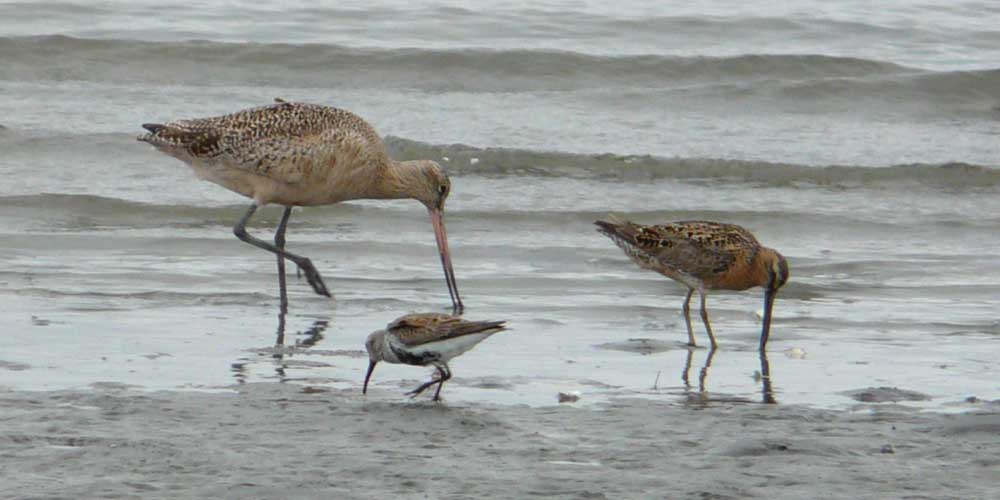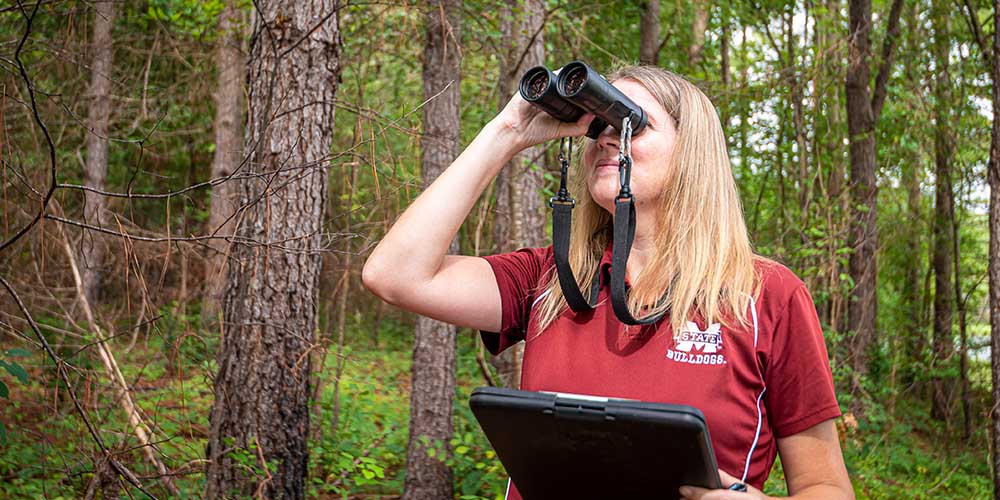Related Stories
Habitat Stories

Migratory Birds Find a Temporary Home
After the 2010 oil spill, the U.S. Department of Agriculture Natural Resources Conservation Service started a Migratory Bird Habitat Initiative to help provide inland wetlands for resident and migratory waterbirds. Associate professor and James C. Kennedy Endowed Chair in Waterfowl and Wetland Conservation, Dr. J. Brian Davis, along with Drs. Richard Kaminski, Elizabeth Webb, and graduate students Jessica Tapp and Mathew Weegman began research to evaluate the initiative.
They studied the habitats that were enrolled in the Migratory Bird Habitat Initiative and evaluated which waterbird species used the habitats and how much food was available for the birds. The research extended over a three-to-four-year period where waterfowl, cormorants, egrets, herons, and other birds like grebes were compared in a well-managed habitat for one to three years. Researchers found that there were almost three times more waterbirds collectively on managed wetlands compared to reference wetlands or those that were not aggressively managed.
2018

The Tombigbee Forest Bird Partnership Helps Bird Conservation Soar in Working Forests
Over 62% of Mississippi's land base is forested, giving the Magnolia State a $13.8 billion-dollar forestry and forest products enterprise. Forest and Wildlife Research Center scientists are part of the Tombigbee Forest Bird Partnership (TFBP). The partnership is led by Emily Jo "EJ" Williams, vice president of the American Bird Conservancy's Southeast and Atlantic Coast region, whose goals include communicating the value of working forests and developing and conducting demonstration and research activities. The goal of the team is to demonstrate values of sustainable forest management for bid conservation and also identifying ways to maintain and enhance values for birds, especially those in decline. Dr. Kristine Evans, associate professor in the Department of Wildlife, Fisheries and Aquaculture and an FWRC scientist, has long studied forested habitats for landbirds.
Evans conducts research and monitoring in collaboration with TFBP partners as well and recently evaluated how forest management activities influence species diversity and abundance at the landscape scale. Most recently, as technical advisory team chair for the East Gulf Coastal Plain Joint Venture, she helped create the East Gulf Coastal Plain Landbird Conservation Plan. In another project, Evans is assessing plant-pollinator-bird relationships on Weyerhaeuser-managed forests in Mississippi and Westervelt-managed forests in Alabama. Williams also discussed the involvement of the Mississippi Band of Choctaw Indians, who have about 28,000 acres of forested land. The Choctaw are in the process of rebuilding their dictionary, which provides the chance to learn more about the cultural importance and bird names in their native language.
The American Bird Conservancy and International Paper fund the partnership with in-kind donations from Weyerhaeuser, the Westervelt Company, and C.A. Barge Timberlands LP. In addition to Evans, Dr. Mark McConnell, MSU assistant professor in wildlife, fisheries and aquaculture, also collaborates on the work.
2022

Research Designed to Create Beneficial Dynamics Between Lake Management and Water Regimes
Dr. Mike Colvin, associate professor, DR. J. Brian Davis, James C. Kennedy Endowed Associate Professor in Waterfowl and Wetlands Conservation, and their team of graduate students in the Department of Wildlife, Fisheries and Aquaculture, are assessing the impact of management practices on fisheries, birds, and plant communities in Bluff Lake and creating a model to assist managers in making scientifically informed decisions as water levels expand and recede. One part of the study looked at how common sportfish respond to drastic changes in water volume and how those changes affect fishing in those waters.
They also looked at how drawdowns, a management practice conducted to encourage growth of plants that feed ducks and birds, affects fish communities. After three years of research, the team designed a model that adequately quantifies possible outcomes of water level fluctuations and assesses benefits of various water level management decisions, taking into consideration the impact on wildlife and fishing conditions.